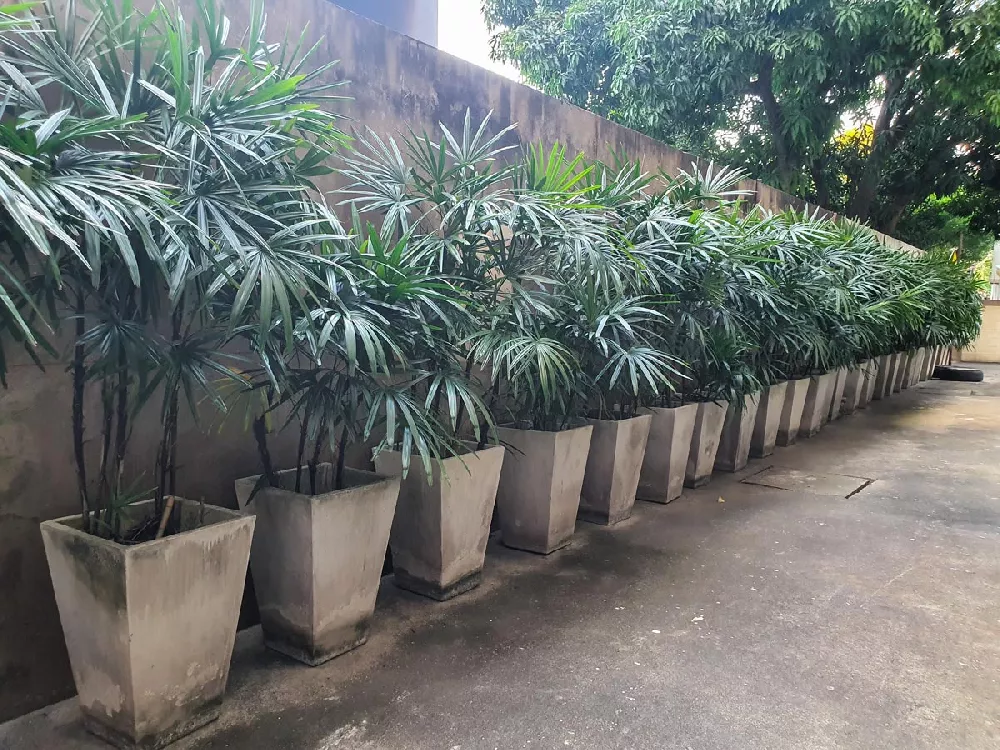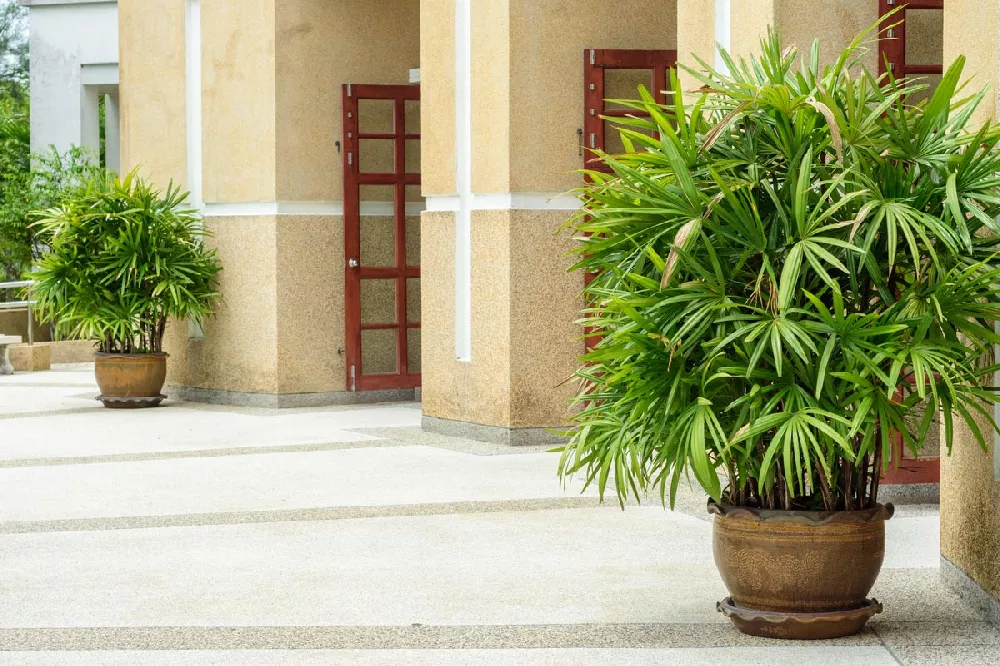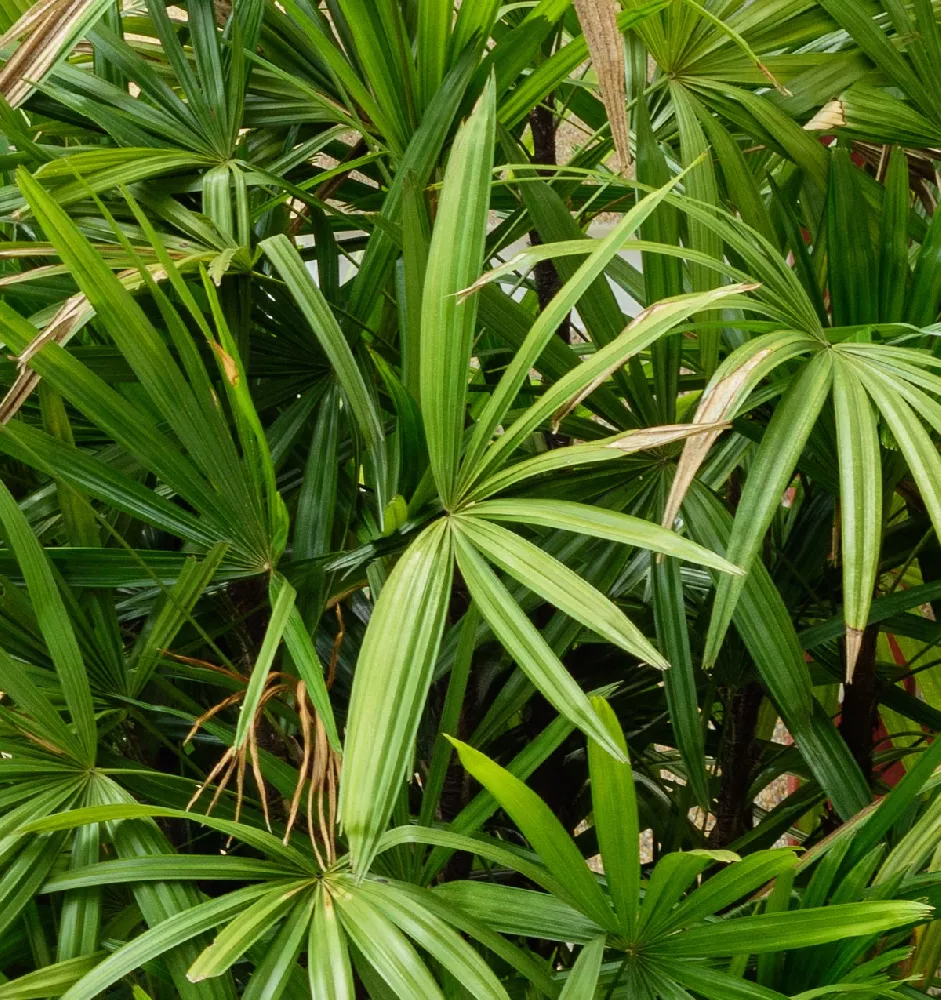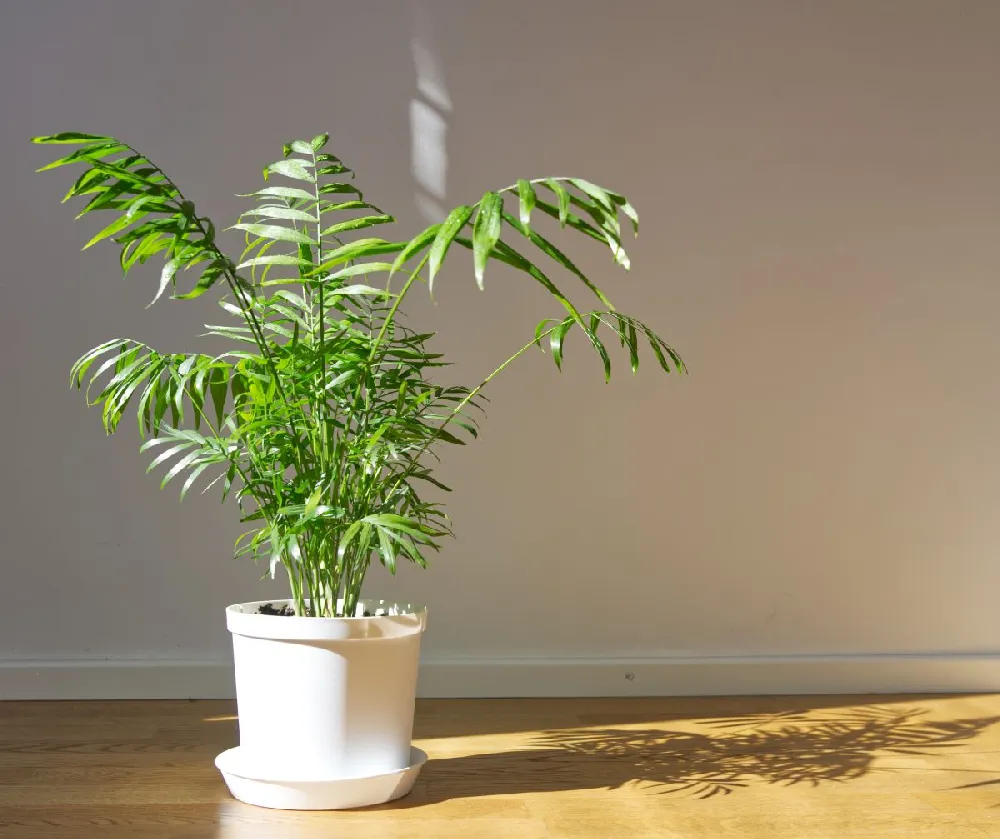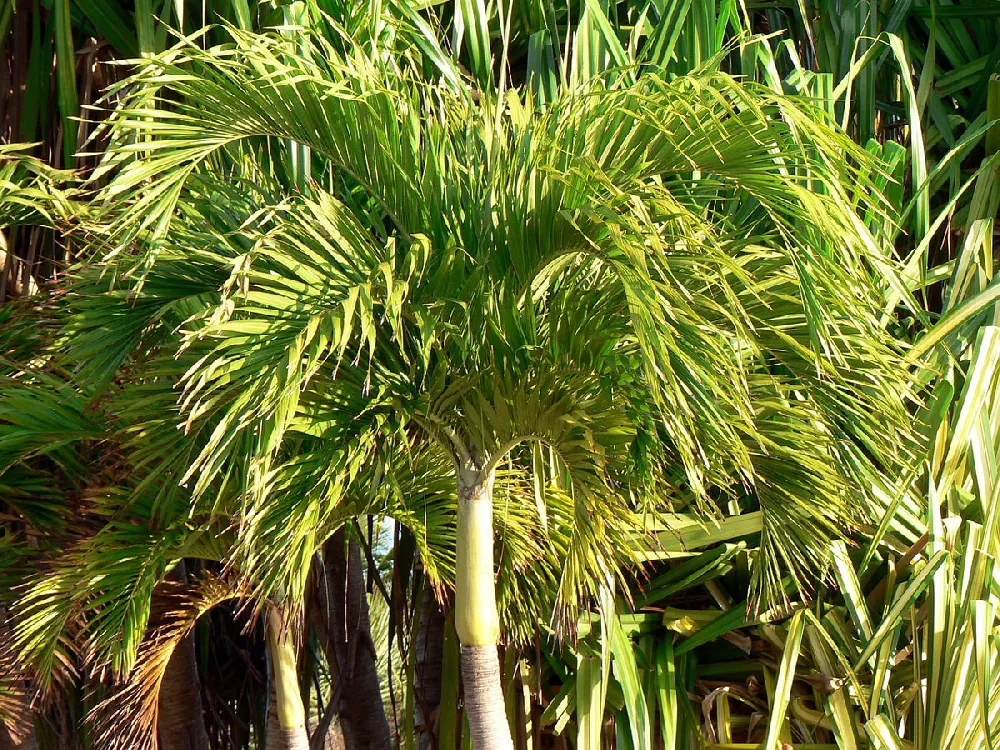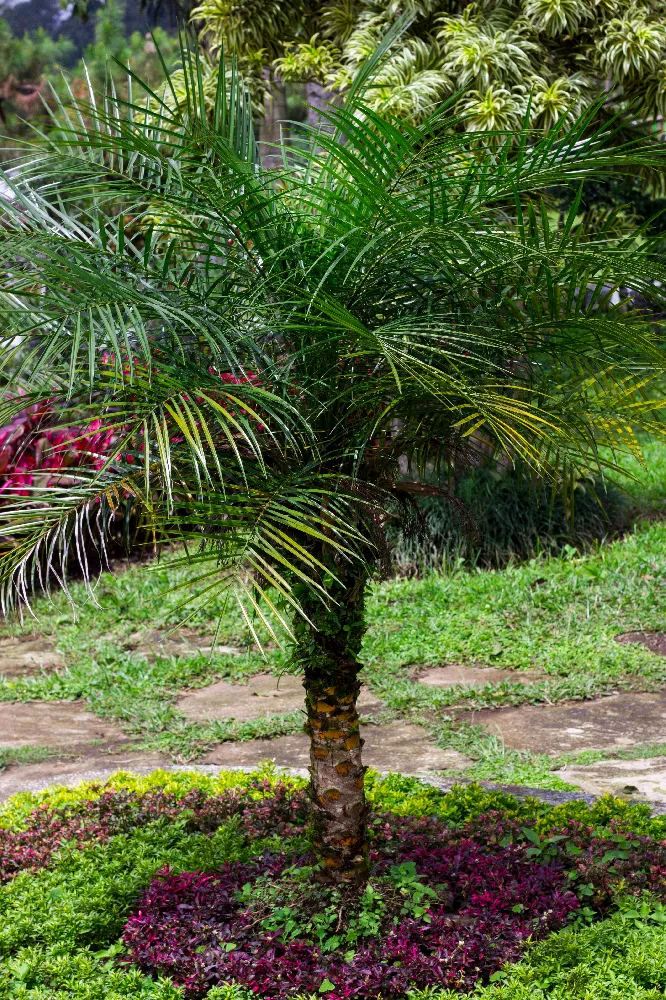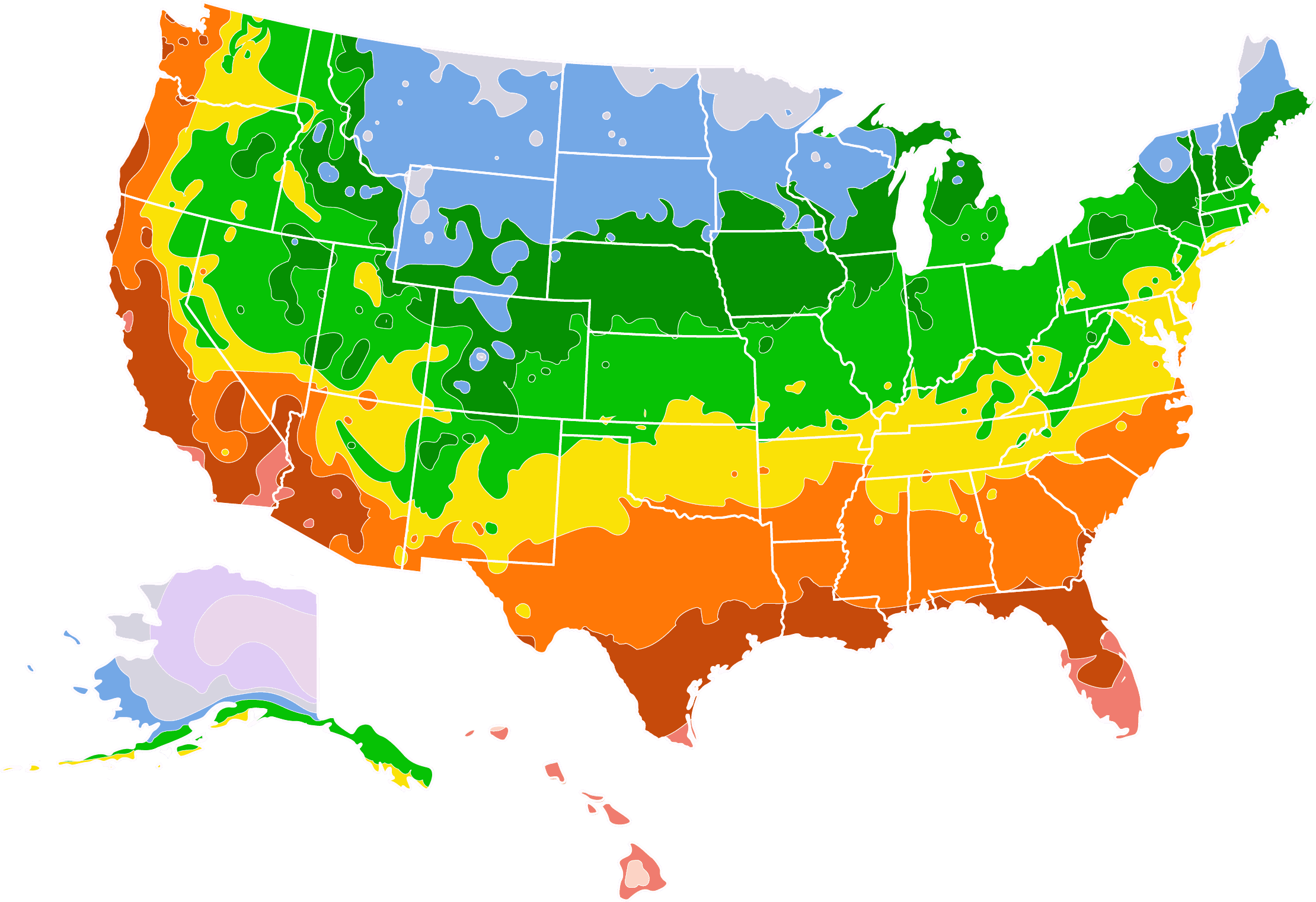- Home >
- Houseplants >
- Indoor Tropical Plants >
- Lady Palm Tree
Lady Palm Tree for Sale - Buying & Growing Guide
- Ships in 1-2 days
- 1-Year Warranty Eligible
- Pots or accessories are not included unless specified in the product options.
Shipping Details:
Products shipped through FastGrowingTrees.com. Once your order is shipped, you’ll receive an email with a tracking number and estimated delivery date. Most orders will ship immediately.
The lady palm tree, Rhapis excelsa, is an elegant and attractive small tree that can thrive in gardens in the deep south but is equally at home in your living room or family room when grown in a container. This evergreen palm tree has glossy, fan-shaped fronds that form a bushy canopy that is easily maintained by pruning. Unlike many palms, the lady palm performs well with minimal sunlight, which makes it a natural choice if you have a spot in your home that receives less-than-full sunlight. In every other aspect, Lady Palm is also easy to grow. It has few pests and diseases, and doesn't need a lot of care to thrive. Here are a few more reasons to add a lady palm to your plant list:
- The lady palm can handle temperatures down to roughly 20 degrees Fahrenheit.
- Slow growth rates mean less repotting over the years.
- This palm is drought- and heat-resistant.
Plant Care
Sunlight

Although lady palm trees can handle full sun, they do best in partial shade — four to six hours of sunlight a day.
Watering
Water your lady palm whenever the soil 2 inches from the surface feels dry; about once a week.
Fertilizing

Apply a slow-release fertilizer formulated for palms or a general-purpose balanced fertilizer for houseplants.
Planting and Care
Planting instructions
If planting outdoors, site your lady palm where it will be shielded from the hot afternoon sun, in a spot with well-draining soil. Unpot your plant, teasing out any encircling roots, which can girdle the tree and slowly kill it. Dig a hole that’s as deep as the root ball and twice as wide. Place the tree in the hole, and, while holding it upright and steady, fill in around it with topsoil. Water thoroughly. Apply a 2- to 3-inch layer of mulch around the root zone, to conserve moisture and hinder weed growth.
Watering and nutrients
When newly planted, water your lady palm tree several times a week. After new growth begins to show, you can cut back to once a week for the rest of its first year. In general, a mature plant needs supplemental watering if the soil 2 inches below the surface is dry. Use a slow-release fertilizer to feed your lady palm, preferably one designed for palm trees — or a general use fertilizer for houseplants if you are growing it indoors. Feed throughout the growing season, but cut back in winter.
Pollination
Lady palm trees are dioecious, meaning that male and female reproductive organs are on different plants. Female plants do have small yellow flowers, but the plants also spread from rhizomatous offshoots.
Pruning
Lady Palms do not need regular pruning. Monitor your plant for dead, diseased, or damaged branches, and prune these out when you see them. You may also trim the outer leaves, which will eventually turn brown and die back as new leaves arise from the center of the tree. If your tree is growing too tall for its space, you may lightly prune out up to a third of the tree’s fronds.
Pests, diseases, and animals
These hearty plants have few pests or diseases. You may see signs of aphids or scale insects; a healthy tree should not sustain any damage from them. Occasionally wiping down the leaves with a damp cloth will hinder infestations. The plants are susceptible to fireblight, which leads to leaves that appear burned. Prune out any infected leaves, and avoid overfertilizing the tree.
Achieving maximum results
The versatile lady palm tree is most often grown as a houseplant. It can be an attractive addition to any interior design, and its low light requirements make it amenable to being placed in spots that other plants wouldn’t tolerate. Choose a container for your lady palm that is about twice the size of the root ball, and with good bottom drainage. Plant the tree in good-quality potting soil, as per our directions above. Since its roots will be constrained by the container, your indoor lady palm will remain a reasonable height of not over 5 to 7 feet. Pot-grown plants tend to need more supplemental watering than those grown in the ground, as well as a regular feeding schedule during the growing season. In winter, you can scale back on both food and water.
FAQs
Where can a lady palm tree be grown outdoors?
Is the lady palm invasive?
No. When grown outdoors in a climate that is conducive to its growth, it will slowly spread by means of rhizome offshoots, which are underground lateral stems that look like roots and may send up shoots near the parent plant. These do not spread quickly, however, and can be dug up and pruned back when necessary.
Can lady palms grow in full sun?
The lady palm is not overly picky about the amount of sun it receives, although full, hot sun may cause leaf tips to burn. In general, your plant will be happiest in full, indirect sunlight. A bright corner may be enough to keep them happy, or you could place your lady palm in a window that receives morning sun and afternoon shade.
Compare Similar Products
You can't add more Product Name - Product size to the cart.
OK